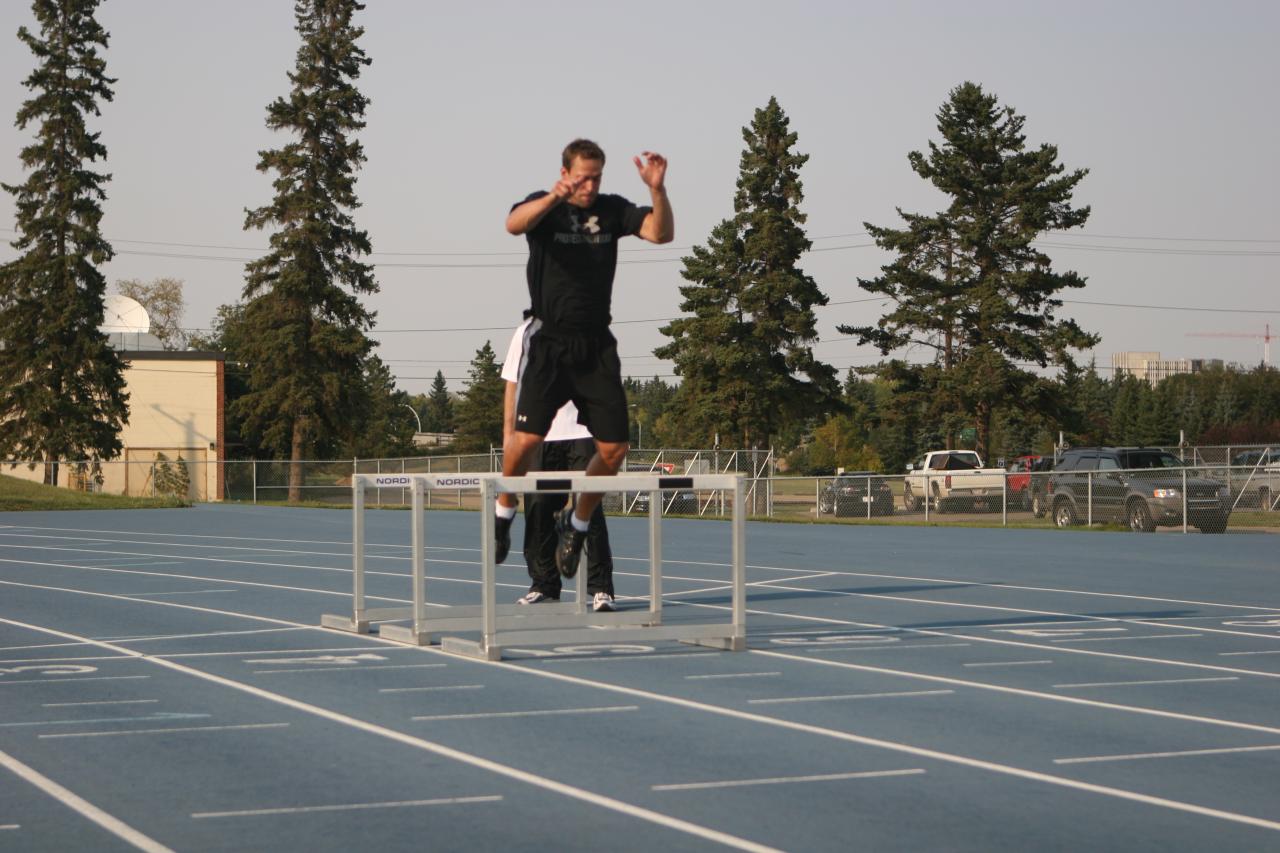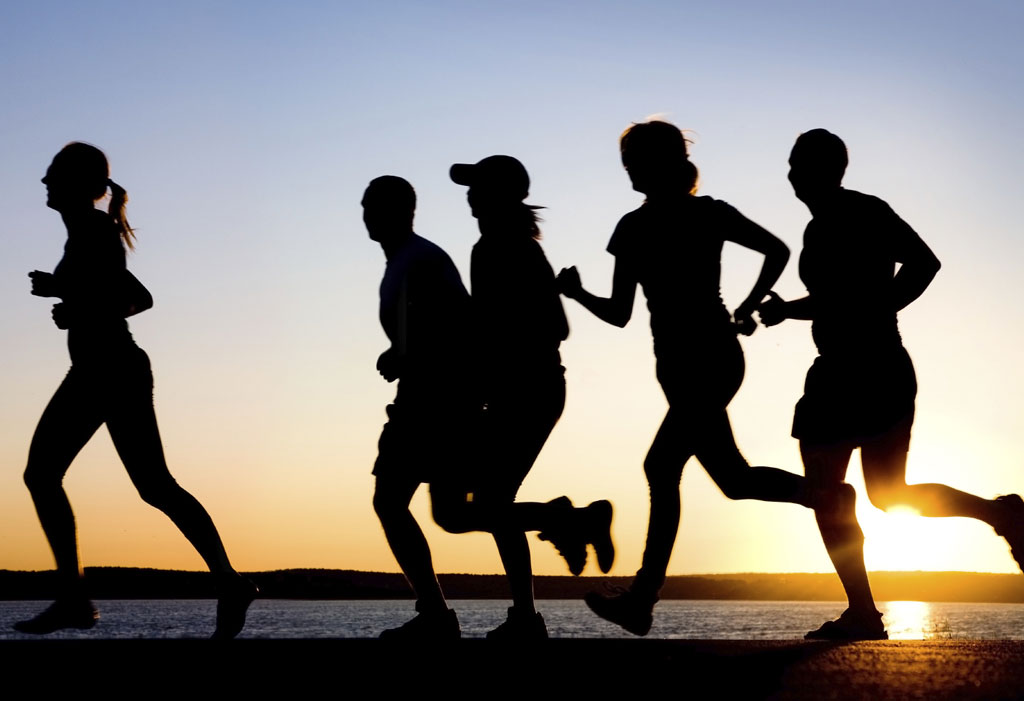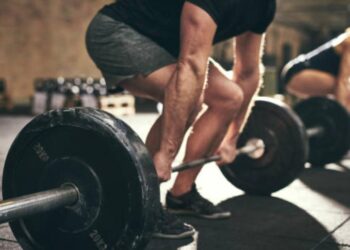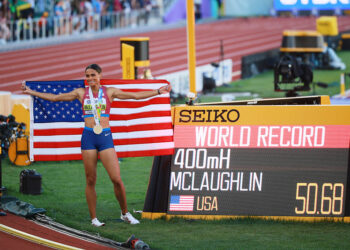For athletes, the off-season is far more than a break from competition; it’s a critical window of opportunity to build a stronger, more resilient foundation for future triumphs. While the allure of rest is strong, the most successful athletes understand that strategic off-season training is where championships are truly forged. It’s the period dedicated to addressing weaknesses, refining skills, enhancing physical capabilities, and ensuring mental rejuvenation, all without the immediate pressure of game day. This comprehensive article delves into the essential off-season workout tips and strategies that empower athletes to maximize their potential, prevent injuries, and return to competition revitalized and at the peak of their game. We’ll uncover why this often-overlooked phase is, in fact, the bedrock of long-term athletic excellence.
The Strategic Importance of the Off-Season

The off-season isn’t just “time off”; it’s a deliberate, structured phase with distinct goals that set the stage for future success. Neglecting this period can lead to stagnation, increased injury risk, and underperformance when it matters most.
A. Physical Regeneration and Recovery
After a demanding competitive season, the body needs time to heal, repair, and recover from the accumulated stress and micro-traumas.
- Tissue Repair: Muscles, tendons, and ligaments undergo significant stress during a competitive season. The off-season allows for physiological recovery and repair of these tissues, reducing chronic soreness and preventing overuse injuries.
- Central Nervous System (CNS) Recovery: Intense competition and high-volume training can fatigue the CNS. Adequate rest and reduced intensity during the initial off-season phase allow the CNS to fully recover, which is crucial for power, speed, and reaction time.
- Hormonal Balance Restoration: Prolonged stress from training and competition can disrupt hormonal balance. The off-season helps restore optimal levels of hormones essential for recovery, growth, and overall well-being. This includes balancing cortisol levels and optimizing testosterone-to-cortisol ratios.
- Mental and Emotional Recharge: Beyond the physical, the off-season provides a much-needed mental break from the pressures of competition, allowing athletes to de-stress, rekindle their passion, and prevent burnout.
B. Addressing Weaknesses and Imbalances
The competitive season often highlights specific physical or skill-based deficiencies. The off-season provides dedicated time to systematically address them.
- Strength Deficits: Identifying muscle groups that are comparatively weaker and designing targeted strength programs to bring them up to par, improving overall force production and injury resistance. For instance, a basketball player might focus on hip abductor strength to improve agility and reduce knee pain.
- Mobility and Flexibility Restrictions: Improving range of motion in joints and muscle flexibility to enhance movement efficiency, prevent stiffness, and reduce injury risk, especially for movements critical to the sport. This could involve targeted stretching, foam rolling, or dynamic mobility drills.
- Skill Gaps: Focusing on individual technical skills that need refinement without the pressure of a game. A soccer player might work on their weaker foot, or a tennis player might focus on a specific serve motion.
- Muscular Imbalances: Addressing discrepancies in strength or development between opposing muscle groups (e.g., strong quadriceps but weak hamstrings) which can lead to injury. This ensures balanced force production around joints.
C. Building a Stronger Foundation
The off-season is the primary time to significantly enhance underlying physical attributes that support sport-specific performance.
- Hypertrophy (Muscle Growth): For many athletes, building muscle mass can increase strength, power, and contribute to injury resilience. The off-season allows for higher volume training conducive to muscle growth without compromising performance on the field.
- Maximal Strength: Developing the ability to produce maximal force, which is the foundation for power, speed, and agility. This often involves heavier lifting with lower repetitions.
- Aerobic Base: For endurance-based sports, the off-season is crucial for building a large aerobic engine, improving cardiovascular efficiency, and delaying fatigue. Even power-based athletes benefit from a solid aerobic base for faster recovery between efforts.
- Movement Efficiency: Refining fundamental movement patterns (e.g., squat, hinge, push, pull, lunge, rotation) to improve athleticism and reduce compensatory movements that lead to injury.
D. Experimentation and Innovation
Without the immediate pressure of competition, the off-season allows for trying new training methods, equipment, or recovery strategies.
- Testing New Techniques: Experimenting with different approaches to strength training, conditioning, or skill drills that might not be feasible during the competitive season.
- Nutritional Adjustments: Trying new dietary strategies or supplementation protocols to see how the body responds.
- Recovery Modalities: Incorporating new recovery tools or methods to see what works best for individual athletes.
Phased Approach to Off-Season Training
An effective off-season isn’t monolithic; it’s typically divided into distinct phases, each with specific objectives and training methodologies.
A. Phase 1: Active Rest/Transition (1-3 weeks)
Immediately following the competitive season, this phase prioritizes mental and physical decompression.
- Complete or Relative Rest: Depending on the sport and athlete, this could mean complete time off from structured training or engaging in very light, enjoyable, non-sport-specific activities.
- Focus on Fun: Engaging in activities for pure enjoyment, without performance pressure (e.g., casual walks, light cycling, playing a different sport, spending time with family).
- Injury Assessment and Treatment: This is the ideal time to consult with medical professionals for any lingering aches, pains, or injuries developed during the season. Proactive treatment now prevents escalation later.
- Nutritional Reset: Focusing on whole, nutrient-dense foods to support recovery and reduce inflammation, perhaps allowing for some dietary flexibility that wasn’t possible during the season.
B. Phase 2: General Physical Preparedness (GPP) / Foundation (4-8 weeks)
This phase shifts focus to building a broad base of general athleticism.
- Increased Training Volume (Moderate Intensity): Gradually reintroducing structured training with a focus on higher volume and moderate intensity.
- Full-Body Strength Training: Using compound movements (squats, deadlifts, presses, rows) to build overall strength and muscle mass. Emphasis on proper form and progressive overload.
- Aerobic Base Building: For most athletes, incorporating longer duration, lower-intensity cardiovascular work to improve endurance and recovery capacity.
- Movement Quality and Mobility: Dedicated time for flexibility, mobility drills, and correcting fundamental movement patterns.
- Varied Activities: Continuing to incorporate different forms of exercise to challenge the body in new ways and prevent monotony (e.g., hiking, swimming, cycling for land-based athletes).
C. Phase 3: Sport-Specific Preparation (SSP) / Strength & Power (6-10 weeks)
As the competitive season approaches, training becomes more specific to the demands of the sport.
- Increased Training Intensity (Lower Volume): Shifting from high volume to higher intensity, mimicking the demands of competition.
- Power Development: Incorporating plyometrics (jumps, bounds), Olympic lifts (cleans, snatches), and medicine ball throws to develop explosive power.
- Speed and Agility Training: Drills focused on acceleration, deceleration, change of direction, and top-end speed, relevant to the sport’s demands.
- Sport-Specific Drills: Gradually increasing the volume and intensity of drills that directly mimic game situations and movements. This bridges the gap between general fitness and sport performance.
- Energy System Development: Training specific energy systems relevant to the sport (e.g., anaerobic capacity for repeated sprints, aerobic power for sustained high-intensity efforts).
D. Phase 4: Pre-Competition / Peaking (2-4 weeks)
The final phase, designed to fine-tune performance and ensure the athlete is fresh and ready for competition.
- Reduced Volume, High Intensity: A “taper” where training volume is significantly reduced to allow for full recovery, but intensity remains high to maintain sharpness.
- Skill Refinement: Focus on highly specific game situations, tactical understanding, and final technical polish.
- Mental Preparation: Visualization, mindfulness, and pre-competition routines to build confidence and mental readiness.
- Nutrition for Performance: Optimizing carbohydrate loading (if applicable), hydration, and nutrient timing to ensure peak energy levels.
Key Off-Season Workout Tips for Athletes

Regardless of the sport, certain principles and practices are universal for an effective off-season.
A. Prioritize Individual Needs
Every athlete is unique. What works for one may not work for another.
- Conduct a Comprehensive Assessment: Work with a coach, trainer, or sports scientist to identify individual strengths, weaknesses, movement patterns, and injury history. This informs a personalized plan.
- Listen to Your Body: Pay attention to signs of fatigue, soreness, or potential injury. Don’t push through pain or ignore signals that indicate a need for rest or adjustment.
- Consider Your Sport’s Demands: Tailor training to the specific physiological and biomechanical requirements of your sport. A marathon runner’s off-season will differ vastly from a weightlifter’s.
B. Embrace Variety
Avoid monotony and engage different muscle groups and energy systems.
- Cross-Training: Incorporating activities outside your primary sport (e.g., swimming for a runner, cycling for a basketball player). This reduces repetitive stress, builds general fitness, and keeps training fresh.
- Different Training Modalities: Alternating between resistance training, cardiovascular work, plyometrics, yoga, Pilates, and mobility drills.
- New Environments: Training outdoors, in different gyms, or with different partners can provide mental stimulation.
C. Emphasize Strength and Power
Strength is the foundation upon which speed, agility, and endurance are built.
- Compound Movements: Focus on multi-joint exercises (squats, deadlifts, presses, rows) that work multiple muscle groups simultaneously, mimicking functional movements in sport.
- Progressive Overload: Continuously challenge the body by gradually increasing weight, repetitions, sets, or decreasing rest times.
- Explosive Movements: Incorporate plyometrics (box jumps, broad jumps) and Olympic lifts (if form is perfected) to translate strength into power.
- Core Strength: A strong core (abdominal, oblique, and lower back muscles) is critical for stability, power transfer, and injury prevention in virtually all sports.
D. Don’t Neglect Aerobic Fitness
A solid aerobic base improves recovery between high-intensity efforts and overall work capacity.
- Low-Intensity Steady State (LISS): Long, easy sessions to build cardiovascular endurance.
- High-Intensity Interval Training (HIIT): Shorter, intense bursts followed by recovery periods to improve anaerobic capacity and VO2 max.
- Sport-Specific Conditioning: Drills that mimic the intermittent high-intensity demands of your sport (e.g., shuttle runs for court sports).
E. Master Recovery
Recovery is where adaptations happen and injuries are prevented.
- Prioritize Sleep: Aim for 7-9 hours of quality sleep per night. Sleep is the most potent recovery tool.
- Optimal Nutrition: Fuel your body with adequate protein for muscle repair, complex carbohydrates for energy, and healthy fats for overall health. Stay hydrated.
- Active Recovery: Light activities like walking, cycling, or swimming on rest days to promote blood flow and reduce soreness.
- Flexibility and Mobility Work: Regular stretching, foam rolling, and mobility drills to maintain range of motion and prevent stiffness.
- Listen to Your Body: Don’t be afraid to take an extra rest day if feeling overly fatigued or sore.
F. Implement Skill Work (Light to Moderate)
The off-season isn’t just about physical conditioning; it’s also for technical refinement.
- Break Down Skills: Focus on isolated components of complex movements to improve technique without game pressure.
- Repetition with Quality: Emphasize perfect execution over high volume in initial skill work.
- Video Analysis: Record and review your technique to identify areas for improvement.
- Seek Expert Coaching: Utilize the off-season to work one-on-one with specialists on specific technical elements.
G. Set Clear, Measurable Goals
Without specific goals, training lacks direction.
- SMART Goals: Ensure goals are Specific, Measurable, Achievable, Relevant, and Time-bound.
- Process vs. Outcome Goals: Focus on what you can control (e.g., “improve squat 1RM by 10kg,” “increase vertical jump by 2 inches”) rather than just wins.
- Track Progress: Regularly monitor and record your training sessions, strength numbers, and physical metrics to see improvements and stay motivated.
The Role of Mental Preparation in the Off-Season
Beyond physical training, the off-season is crucial for cultivating mental resilience and sharpness.
A. Mental Recharge
Stepping away from the daily grind of competition.
- Time Away from Sport: Briefly disconnecting from the sport entirely to reduce mental fatigue and prevent burnout.
- Engaging in Hobbies: Pursuing non-sport-related interests to provide a mental break and foster overall well-being.
- Mindfulness and Relaxation: Practicing meditation, deep breathing exercises, or spending time in nature to reduce stress and improve mental clarity.
B. Skill Development for Mental Game
Working on psychological aspects of performance.
- Visualization: Regularly visualizing successful plays, overcoming adversity, and achieving peak performance.
- Goal Setting: Collaborating with a sports psychologist or coach to set mental goals (e.g., “improve focus for 5 minutes longer,” “better manage pre-game nerves”).
- Self-Talk Strategies: Developing positive and constructive internal dialogue to use during challenging moments.
- Resilience Training: Preparing for future setbacks by understanding how to learn from them and bounce back stronger.
Common Off-Season Mistakes to Avoid
Even with good intentions, athletes can derail their off-season progress.
A. Doing Too Much, Too Soon
Rushing back into intense training after rest can lead to injuries or burnout. A gradual ramp-up is crucial.
B. Neglecting Recovery
Believing that more training is always better, while underestimating the vital role of sleep, nutrition, and rest.
C. Focusing Solely on Strengths
Ignoring weaknesses in favor of continuing to train what’s already strong. This perpetuates imbalances and limits overall development.
D. Skipping the “Active Rest” Phase
Jumping straight into intense training immediately after the season, preventing proper physical and mental recovery.
E. Lack of Structure or Plan
Winging it without a clear, phased training plan. This leads to inefficient training and missed opportunities for development.
F. Inconsistent Nutrition and Hydration
Allowing dietary discipline to slide too much, which hinders recovery and adaptation.
G. Ignoring Minor Aches and Pains
Dismissing small discomforts that could escalate into significant injuries if not addressed early.
Conclusion
The off-season is a golden opportunity, a hidden gem in the athletic calendar where true champions are forged. It’s a strategic period dedicated not just to recovery, but to meticulous physical preparation, targeted skill refinement, and crucial mental rejuvenation. By embracing a phased approach, prioritizing individual needs, emphasizing strength and power, mastering recovery, and diligently avoiding common pitfalls, athletes can transform their time away from competition into a powerful catalyst for future success. The wise utilization of the off-season ensures that when the competitive season begins, athletes are not merely returning to the field; they are unleashing a newly forged, more resilient, and ultimately, more victorious version of themselves.













